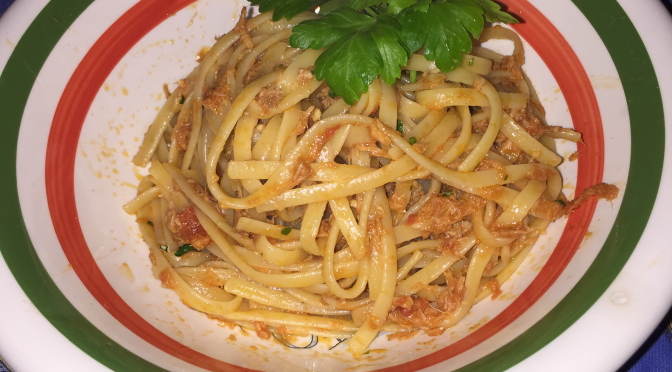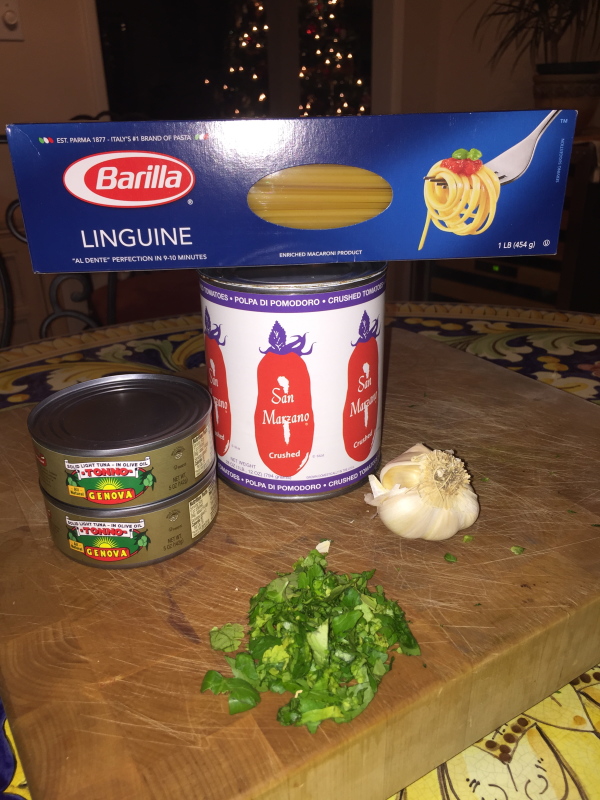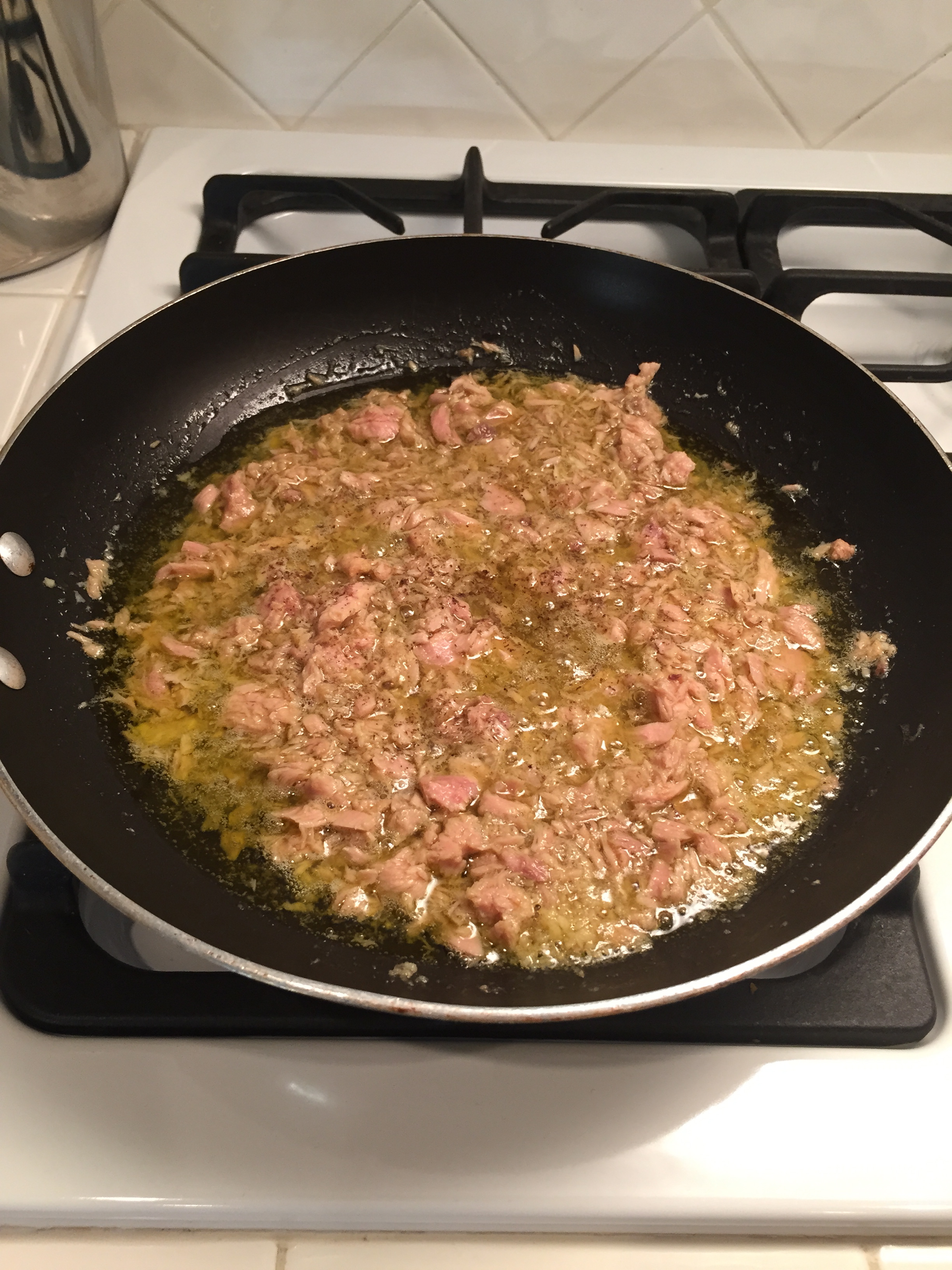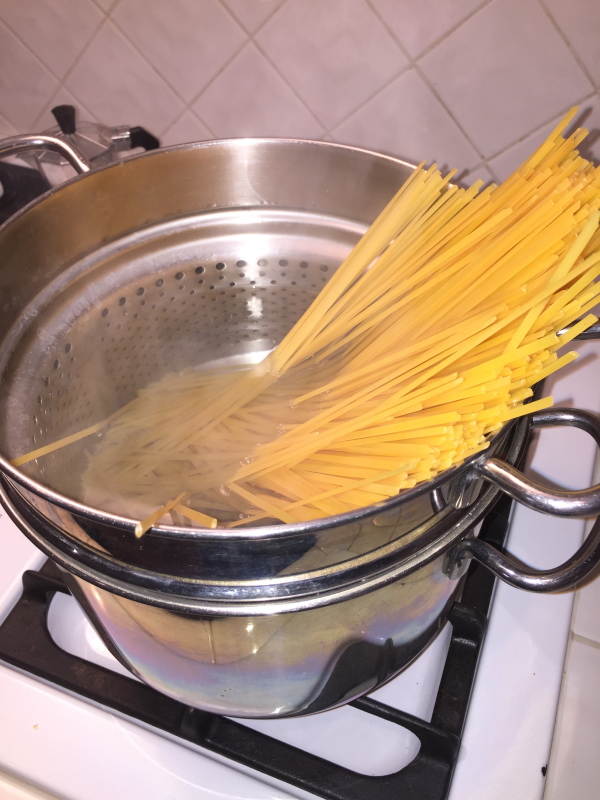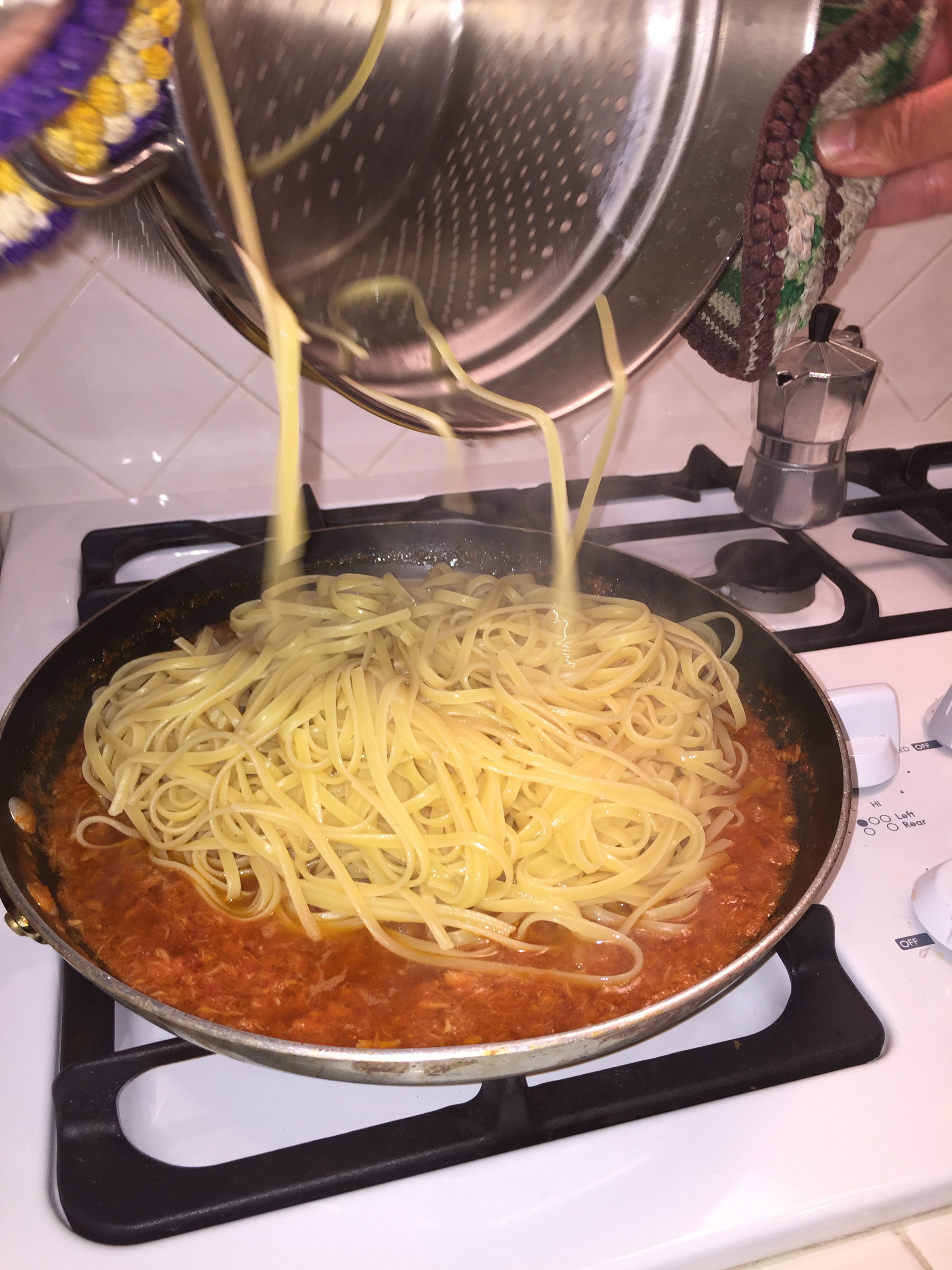Food, glorious food! If your doctor keeps telling you that you need to put on a couple of pounds I highly recommend moving in with an Italian family during the month of December when, by law, your food intake should equal that of the previous eleven months combined.
Preparation for the Christmas Day feast begins on Christmas Eve and includes a heavy pasta as the first course: handmade fettuccine with a meat ragu’, or lasagna with handmade pasta, meat sauce, and creamy bechamel. Here is a picture of a lasagna we made recently (and quickly consumed) and no, I can’t give you the recipe because it’s too much trouble to type and, more to the point, way too much trouble for you to make. I can brag about this because I am barely responsible for the finished product; as you can see my husband has perfected the recipe.
Lasagna with homemade pasta, Bolognese sauce, and bechamel.
Christmas Eve in Italy is a day of fasting from meat. I’m pretty sure that The Church meant for Christians to observe Christmas Eve in a respectful, solemn mood, and since meat was an expensive luxury at one time, abstaining from it proved one’s ability to place otherworldly thoughts above their own stomachs. Today, this “fast” has turned into a buffet of fish pastas, shrimp risottos, fried cod, pizza, and fried vegetables. Dessert cannot be eaten on Christmas Eve so Italians play cards after dinner until midnight, at which time it is officially Christmas Day and the sweets come out and the champagne is uncorked.
I’m often asked about the Feast of the Seven Fishes, usually by East Coast Italians. (By the way, do not waste your time correcting an East Coast Italian on the plural of the word “fish.” They also eat “macaronis” instead of pasta.) We are not familiar with that in Rome – it could be a Southern Italian tradition – we eat as many fishes as they put on the table.
I wanted to share with you our family recipe for Christmas Eve pasta al tonno, or pasta with tuna. The mention of a pasta with canned tuna is usually met with scrunched-up noses here in America, but keep in mind that the beauty of the Italian cuisine is its simplicity and ability to throw together something delicious with few, but good ingredients.
This recipe is simple and quick. We make it often, as we usually have all the ingredients on hand. Using the proper ingredients is the most important part of Italian cooking. You cannot skimp on the pasta, tomatoes, or olive oil – ever. Here’s exactly what you’ll need:
1 lb of long Italian pasta: Barilla, de Cecco, or even a fresh pasta like Buitoni. By long, I mean linguine, spaghetti, fettuccine.
1 can of San Marzano Tomatoes. (28 oz usually) These cost about $4 per can and most supermarkets carry them. You can get crushed tomatoes or whole tomatoes, but you’ll have to run the whole ones through the blender to crush them.
2 cans of Italian tuna. I get the Genova brand at Ralph’s or you can get other brands at Italian delis. This tuna is packed in olive oil and you’ll want to throw in the oil along with the tuna. If you buy the tuna packed in water you will ruin the whole thing.
2 cloves of garlic, chopped very fine. I use Trader Joe’s frozen cloves. They’re the best.
2 tablespoons of extra virgin olive oil
1/4 cup (give or take) of chopped, fresh, Italian parsely
The most important part of a good Italian dish is using the best ingredients.
Fill a large pot with water and let it come to a boil while you get started with the sauce.

- Gently saute the garlic in the olive oil – don’t let it get brown – throw it away and start over if it’s overcooked. Yuck!
Add the two cans of Genoa, or any Italian tuna, with the oil; saute at medium heat.
Add the canned tomatoes and saute for about 20 minutes, until the color has changed from bright red to orange and the tomatoes have lost their raw, acidic taste. Add a touch of salt.
The water should be boiling by now. Add a couple of tablespoons of salt and add the pasta. This sauce calls for a long, thin pasta rather than a short one such as rigatoni or farfalle. Fresh pasta will work too. Buitoni makes good fresh pasta, found in the refrigerated deli and cheese section of the supermarket.
Add the cooked (al dente) pasta to the sauce and saute for a couple of minutes so the sauce coats the pasta. Don’t worry if some of the pasta water gets in the sauce – that’s a good thing. In fact, if the sauce seems a bit too thick, you can always add some of the pasta water to loosen it up.
- Ta dah! A sprinkle of chopped Italian parsley, and you’re good to go. DO NOT SPRINKLE PARMESAN CHEESE ANYWHERE NEAR THIS DISH! As every good Italian knows, fish and cheese clash on the taste buds. Please trust me on this.
